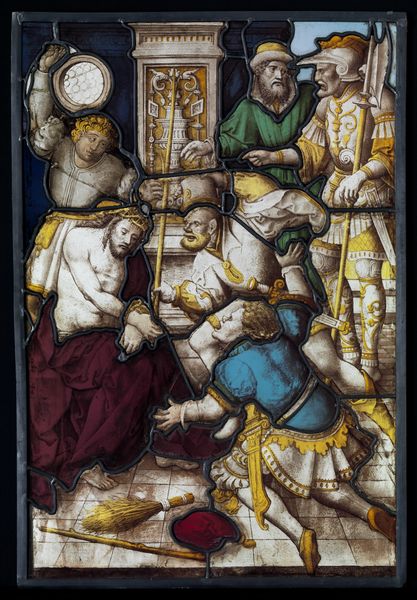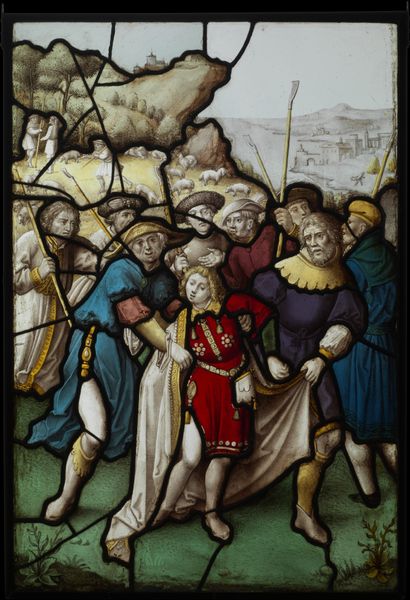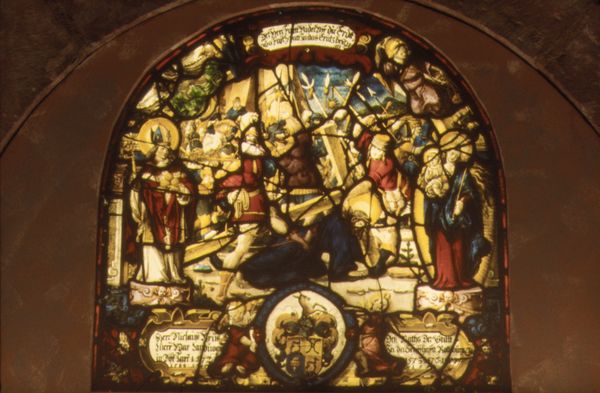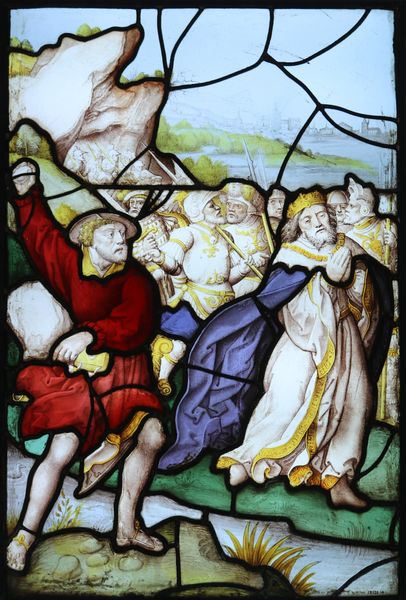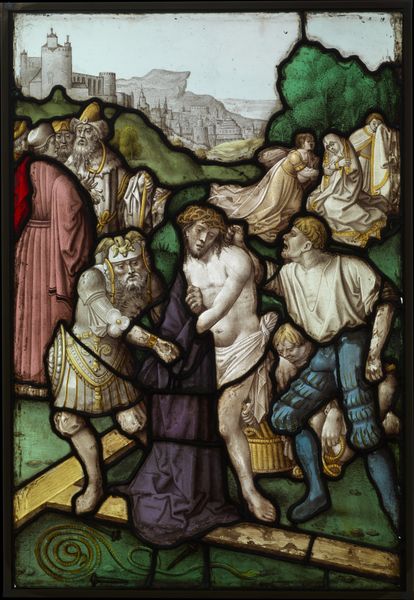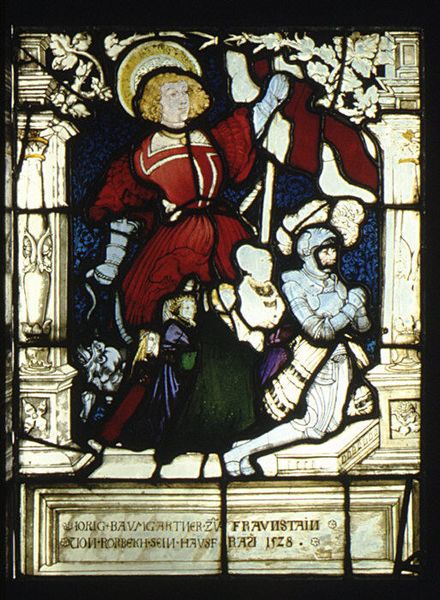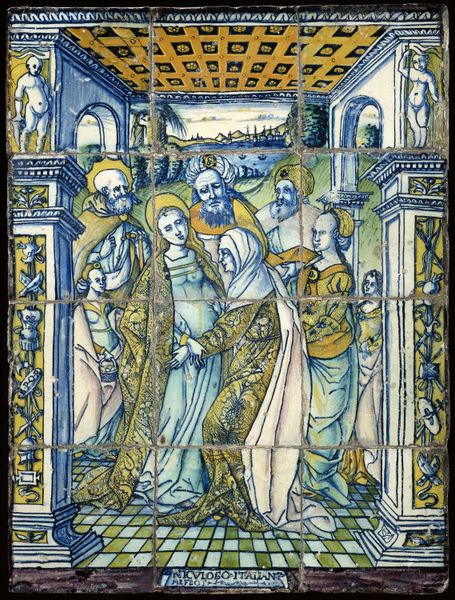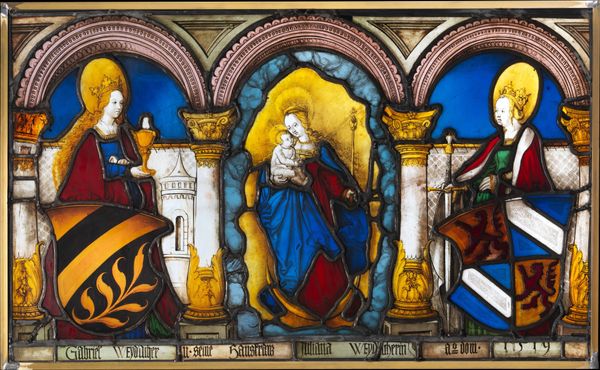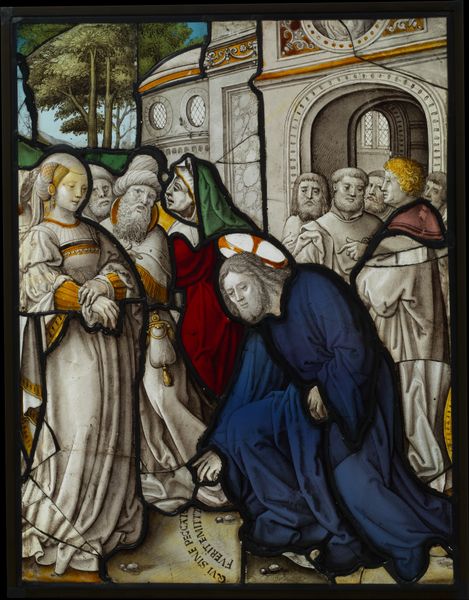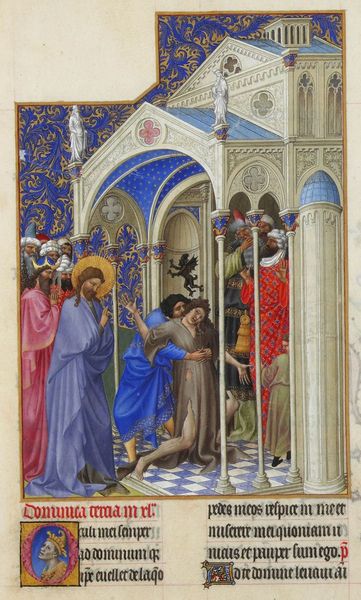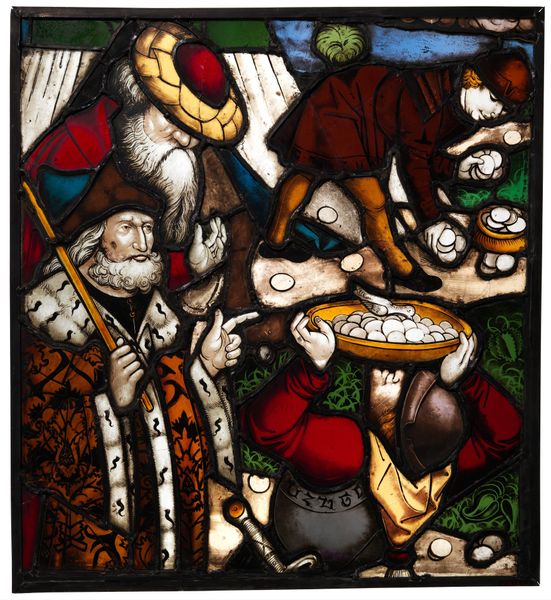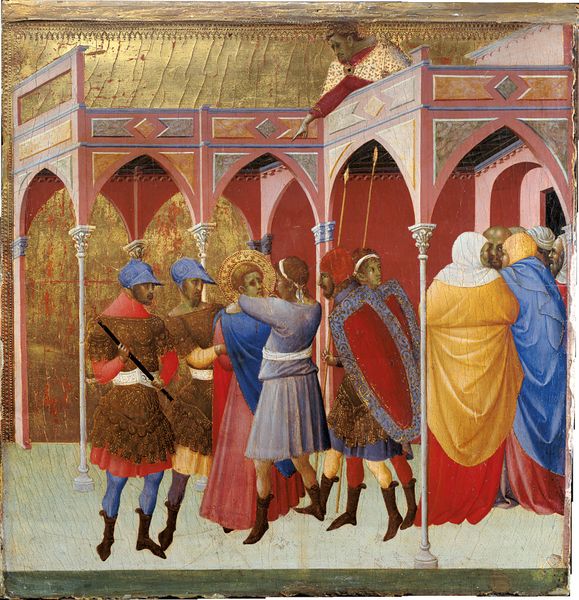
Martyrdom of the Seven Maccabee Brothers and Their Mother 1525 - 1540
0:00
0:00
painting, glass
#
narrative-art
#
painting
#
figuration
#
glass
#
men
#
history-painting
#
northern-renaissance
#
decorative-art
Dimensions: Overall: 27 3/4 × 18 1/2 in. (70.5 × 47 cm); Framed (confirmed): 28 1/2 × 19 5/16 × 5/8 in. (72.4 × 49.1 × 1.6 cm)
Copyright: Public Domain
Editor: Here we have Dirck Vellert's "Martyrdom of the Seven Maccabee Brothers and Their Mother," created sometime between 1525 and 1540. It's a stained glass panel, and it's really striking how the artist uses color to differentiate between the figures. What's your take on this piece, particularly in terms of its historical significance? Curator: Well, this isn't just decorative art, it's a loaded socio-political statement rendered in glass. Look closely: Vellert chooses a biblical subject, but why *this* story during the Northern Renaissance? It depicts unwavering faith in the face of tyranny, which, during the Reformation, spoke volumes. Consider the political context: religious reform movements were challenging established authority. How do you think this depiction of steadfast belief in the face of persecution might have resonated with viewers at the time? Editor: That’s a great point. I didn't think about it as speaking to that particular historical moment. The brothers' defiance mirroring the defiance of reformers? Curator: Precisely. Stained glass, usually commissioned by wealthy patrons or religious institutions, became a vehicle for subtly endorsing, or at least acknowledging, the tensions of the era. The meticulous detail, almost miniaturist, further emphasizes the importance of conveying a specific message to its intended audience. Were these panels publicly displayed, or were they intended for private devotion? The context shifts the interpretation. Editor: So, the act of depicting this story, the medium chosen, and even the intended location, all become intertwined with the socio-political atmosphere? It gives the artwork a layered, powerful impact. I’ve never considered stained glass in this light. Curator: Exactly. By analyzing those layers, we can see how artists used even seemingly decorative arts to engage with complex social and political currents. Editor: That completely changed how I see this artwork. Thank you! Curator: My pleasure. Always look beyond the immediate beauty of a piece, and consider the world it inhabited and influenced.
Comments
No comments
Be the first to comment and join the conversation on the ultimate creative platform.
